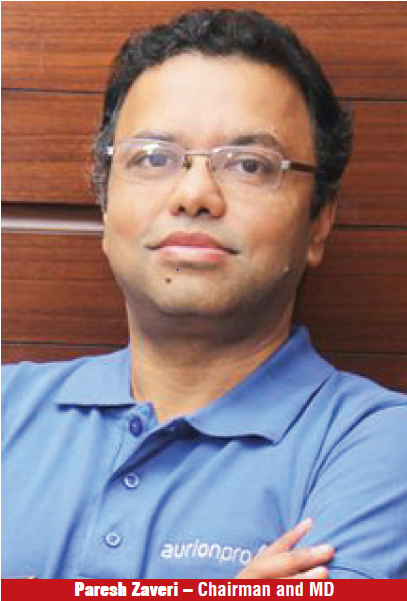Want to Subscribe?
Read Corporate India and add to your Business Intelligence

![]() Unlock Unlimited Access
Unlock Unlimited Access

Editorial 123 15
At a time when it is busy tackling the new Omicron variant of Covid-19 and assuaging the feelings of angry farmers, while not forgetting its political agenda of retaining power at the Centre, the Modi government is seemingly blinkered to the resurgent monster of inflation.
The annual inflation rate in the country edged up 5.1 per cent in November 2021, albeit staying within the RBI’s target range of 2 per cent to 6 per cent for a fifth straight month. Food inflation jumped to a 3-month high of 1.87 per cent, with oil and gas recording the biggest increase of 29.62 per cent while prices of vegetables declined by 13.62 per cent. Costs also accelerated for housing (66 per cent versus 54 per cent in October) but slowed for fuel and electricity (13.35 per cent versus 14.35 per cent).
India’s benchmark inflation rate, measured by the consumer price index (CPI), rose 4.91 per cent yoy in November 2021 on the back of a rise in vegetable prices. Core inflation, which is the non-food, non-fuel component of the CPI basket, stood at 6.1 per cent against 5.8 per cent the month before, while food inflation in November rose to 4.87 per cent from 0.85 per cent a month ago. In India, the most important category in the consumer price index is food and beverages (45.86 per cent weightage),while miscellaneous accounts for 28.32 per cent, housing 10.07 per cent, fuel and light 6.84 per cent, clothing and footwear 6.53 per cent, and paan, tobacco and intoxicants 2.38 per cent.
Industrial product prices are also on the rise. FMCG and consumer durables companies have already resorted to a price hike twice in the current year, and a third price rise is not far away. The consumer durables industry maintains that prices of inputs like steel, copper, aluminium and plastic have reached an all-time high. Steel prices have increased by Rs 77 per kg in the third quarter of the current fiscal from Rs 38 per kg in April/May 2020, copper prices have risen to Rs 9,700 per tonne from Rs 5,200 per tonne, and aluminium prices have gone up from Rs 1,700-1,800 per tonne to Rs 2,800 per tonne. Steel makers blame the hike on prices of coal which have zoomed to a new high of Rs 432 a quintal last month from Rs 180 at the beginning of the year.
Consumer electronics manufacturers have already raised prices of their products by 3 to 5 per cent this month, particularly on refrigerators, washing machines and air-conditioners, and are eyeing another price increase of 6 to 10 per cent next month. The automobile industry too has implemented price increases and may take them further. Leading FMCG manufacturers, including Hindustan Unilever, Britannia Industries, Marico and Dabur, have raised prices 5 per cent to 12 per cent over the past two quarters. All of them are getting ready to raise prices again by 4 to 5 per cent as “there is no respite in the rise in costs.”
Unfortunately, the inflationary price spiral has come at a time when the economy and millions of Indians remain hard-hit by the Covid pandemic. Rising prices of medicines, food, edible oils and pulses, coupled with the unbearable spurt in prices of petrol and LPG, have played havoc with the budget of the common man.
Clearly, New Delhi needs to tackle the all-round price spiral on a war footing. If this is not done, and the inflation monster continues to terrorise the common Indian for another couple of years, all the powerful oratory of the Prime Minister and the drum beats of his fan base may go in vain in the next general elections.
Cover story 123 15

The last two Covid-hit years have been a time of turmoil for people, economies and stock markets the world over. The Indian stock market is no exception. Just as the Indian economy started picking up and both domestic and foreign investors started pumping money into the stock market, the deadly Omicron variant of Covid-19 has played spoilsport and pulled down the twin barometers of the stock market - the BSE Sensex and Nifty 50 - to levels from several months ago.
Captains Speak 123 15

“With the improving economic conditions, increased momentum across all business segments and improved financial indicators, we are confident of seeing a long and sustained growth phase along with strong profitability, going forward,” says Paresh Zaveri, Chairman and MD.
Expert Opinion 123 15
According to the Indian National Statistical Office, the Indian economy expanded by 8.41% in the second quarter of fiscal 2021-22 compared to the corresponding quarter in fiscal 2020-21. However, following the economy’s 20% expansion in the first quarter of this fiscal, can the 8% growth in the second quarter be seen as evidence that India is returning to growth after the pandemic-induced slowdown?
- Dr. V. V. L. N. Sastry (Post Doctorate in Economics and a PhD in Law & Public Policy.)
Corporate Feature 123 15
Inorganic growth is its route of choice for fast growth, in keeping with which ANG Lifesciences India has in quick succession acquired a penicillin unit, two formulation units and a huge API unit. Consequently, sales during the last five years have zoomed from Rs 67.67 crore in fiscal 2017 to Rs 154.38 crore in fiscal 2021, with PAT jumping from Rs 2.92 crore to Rs 7.03 crore. Its other fincancial parameters are also healthy – reserves at the end of March 2021 were Rs 36.40 crore, almost six times its equity capital of Rs 5.18 crore. The upbeat company is now looking at revenues of Rs 800 crore in fiscal 2022-23.
Tax Angle 123 15
In a sign of increasing global focus on the issue of tax evasion by large corporate entities, as many as 136 countries under the umbrella of the OECD have agreed on a minimum global tax rate of 15%. The idea is to stop the flow of corporate profits to tax havens, in the process denying home countries much-needed tax revenue. But, as Shivanand Pandit points out, the 10-year grace period on the proposed global corporate tax rate, and other exemptions, may be a big dampener. However, the deal is still welcome as it will help establish a more just global tax system and free countries from long-drawn litigations with large MNCs.
By Shivanand Pandit

November 15, 2025 - First Issue

Industry Review

Want to Subscribe?
Read Corporate India and add to your Business Intelligence

![]() Unlock Unlimited Access
Unlock Unlimited Access
Lighter Vein

Popular Stories
Archives
